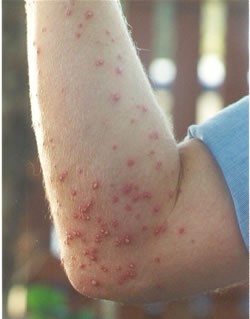The department has rigorous and highly effective import declaration, inspection and import treatment requirements in place to reduce the risk of harmful pests and diseases getting into and establishing in Australia.
Despite this, a small percentage of imported items may still contain a hitchhiking pest or disease of biosecurity concern after being imported.
The Biosecurity Act 2015 includes provisions to strengthen our biosecurity surveillance activities to prevent exotic pests and diseases from entering and establishing in Australia. One of the ways we’re doing this is through the National Border Surveillance programme.
National Border Surveillance programme
From November 2016, we will be stepping up our pest surveillance activities at Australia’s borders.
If you are an operator of a premises under an approved arrangement, mail centre, sea port or airport, our biosecurity officers may contact you to seek your permission to undertake field surveillance work on your site.
This work may include:
- setting and managing pest traps
- taking samples of plants or insects
- taking photos of plants or insects of interest.
We can also answer any questions or discuss any concerns you may have about biosecurity especially regarding the top 40 exotic and unwanted plant pests.
If we find anything unusual, we will work with you to contain the pest. This may save your business from additional clean up costs down the track.
What if we find something?
Most plants and pests we find are of no concern. But on the rare occasion that we find a suspected exotic pest or disease, we need to act quickly to stop it spreading and leading to a larger clean-up down the track.
If we find something unusual we will:
- take a specimen and identify the plant or pest in the laboratory. If it is found not to be of concern, then no further action is needed. For a positive identification, we will run further tests to confirm the finding
- work with you to deal with the incursion if further tests confirm that it is an exotic plant or pest. Our response will depend on many factors, including the type of pest, the life stage of the pest, how the pest moves and ongoing weather conditions. We will always try, wherever possible, to avoid any unnecessary disruptions to your business.
If left untreated, exotic plants and pests have the potential to cause major human, environmental and economic impacts.
Our case study shows how we have worked with businesses at the border to respond to an exotic pest.
Red imported fire ants finding, Port Botany, NSW, 2014
Departmental officers spotted what they suspected was a nest of red imported fire ants (RIFA), a type of tramp ant, at a cargo logistics business during routine surveillance at Botany Bay in 2014.
Source: Queensland Government Department
of Agriculture and Fisheries
Following DNA tests confirming the identity of the ant, officers quarantined a small section of the site, chemically treated the ants and dug up the nest. They also searched the area and destroyed any further traces of the pest and surveyed up to 2km around the site.
As an ongoing measure, officers ran surveillance for two years when the property was finally declared free of RIFA.
Apart from some movement restrictions at a small part of the site and allowing access for the response team, the eradication work had minimal impact to the business operator. If the incursion had gone undetected and spread more widely, the clean-up costs and disruption to individuals and businesses at the port and in the wider community could have been far greater.
Why RIFA is a problem
RIFA is an aggressive, invasive species known to move in large numbers quickly and undetected, causing major disruption to people, the environment and economy. While rarely deadly, the sting tends to cause a painful, burning itching sensation on the body lasting up to an hour. When there are many bites it can make a person feel like their body is on fire.
An incursion of RIFA in Brisbane in 2001 has led to millions of dollars being spent in an effort to eradicate the pest. Despite the work, the pest has spread to other parts of South East Queensland and in 2017 the clean-up remains ongoing.
Reporting a concern
Managing Australia's biosecurity system is a big job, and we can't do it on our own.
If you see an insect, animal or weed that could have entered Australia by hitchhiking on goods imported from overseas, report the biosecurity concern to our department.

